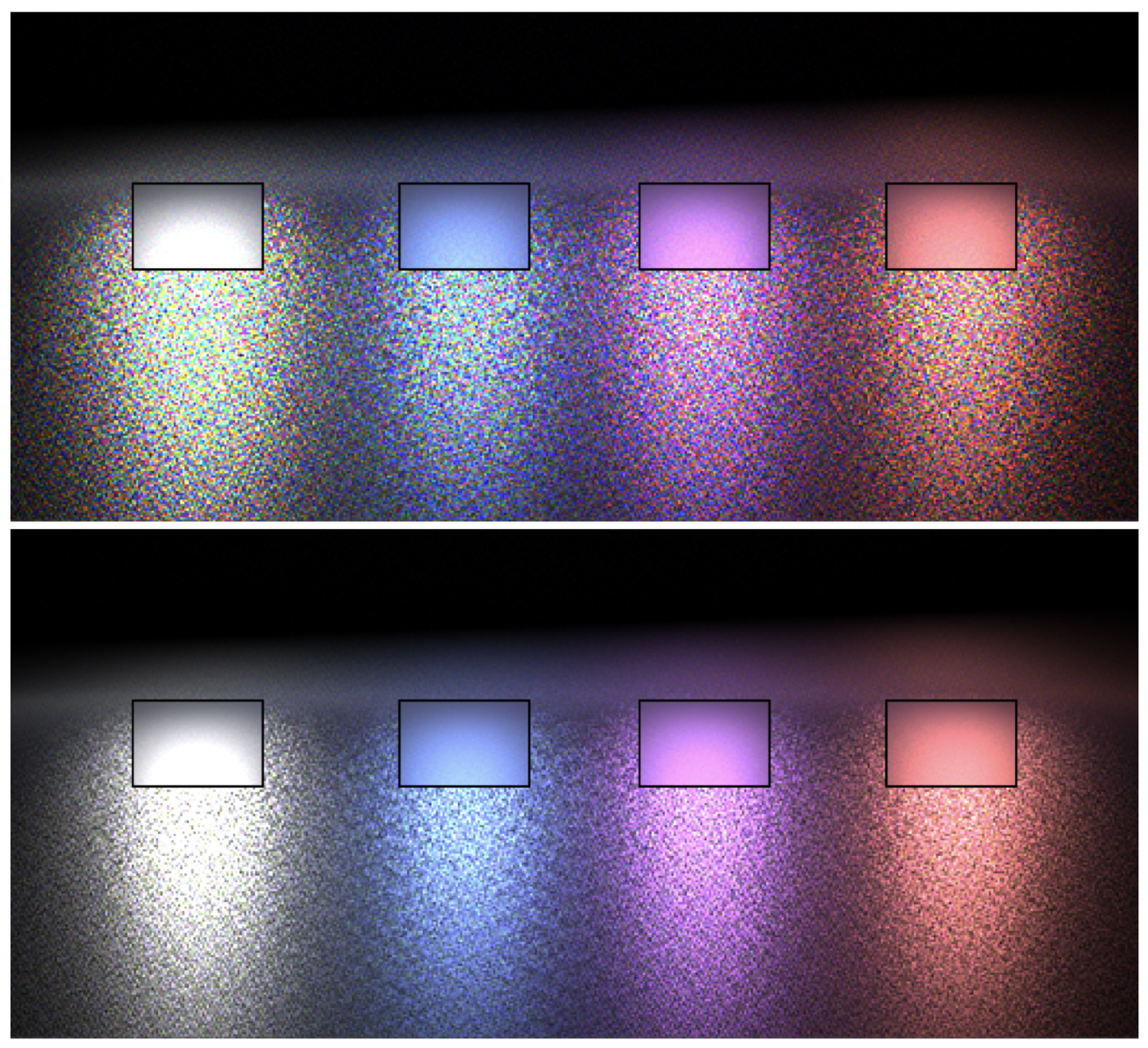Note that an implementation of the presented technique can be found in ART, our rendering research toolkit.
Abstract
We present a spectral rendering technique that offers a compelling set of advantages over existing approaches. The key idea is to propagate energy along paths for a small, constant number of changing wavelengths. The first of these, the hero wavelength, is randomly sampled for each path, and all directional sampling is solely based on it. The additional wavelengths are placed at equal distances from the hero wavelength, so that all path wavelengths together always evenly cover the visible range.
A related technique, spectral multiple importance sampling, was already introduced a few years ago. We propose a simplified and optimised version of this approach which is easier to implement, has good performance characteristics, and is actually more powerful than the original method. Our proposed method is also superior to techniques which use a static spectral representation, as it does not suffer from any inherent representation bias.
We demonstrate the performance of our method in several application areas that are of critical importance for production work, such as fidelity of colour reproduction, sub-surface scattering, dispersion and volumetric effects. We also discuss how to couple our proposed approach with several technologies that are important in current production systems, such as photon maps, bidirectional path tracing, environment maps, and participating media.
